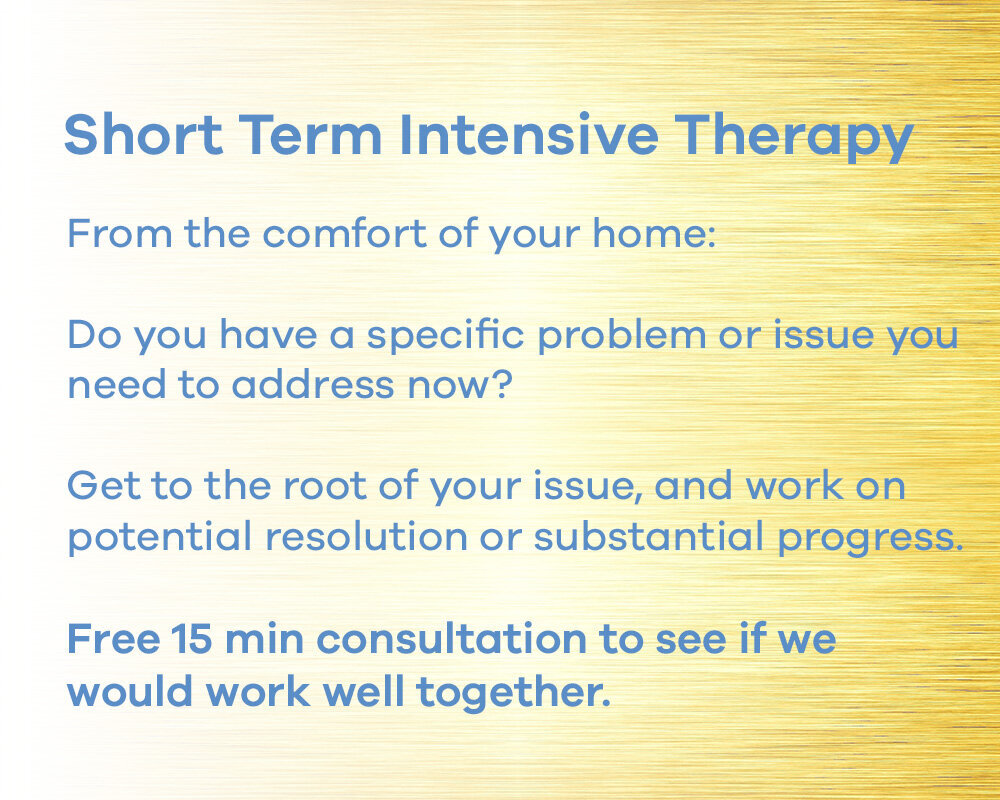Quieting the Storm
/How to calm your nerves before giving a speech
Most public speaking tips are about making eye contact, starting with a question or a joke, etc. But public speaking is the number one fear for many people. Standing in front of a group of people and having them stare at you while you try to put together a coherent sentence is terrifying for most.
No matter the source of anxiety, a court date, a date, an interview, a social event, meeting the parents for the first time, these can help.
These are some tried and true techniques from psychology that can assist you in eliminating your fear of public humiliation so that you can focus on what you are saying.
Exercise One
Start by visualizing yourself: you are giving your speech. As you go through it, ask yourself:
- What are you feeling? (sad, scared, terrified, frozen, etc.)
- Where is the feeling located in your body? (chest, heart, neck, legs, etc.)
Focus on the feelings and the picture of giving your speech.
What is the negative belief about yourself that comes to mind? (Is it, “I am stupid. I am a failure. I am not good enough”. Etc.?)
Once you have isolated that feeling in your body, combined with the picture of you giving the speech, and holding the negative belief, float back in time and let your unconscious take you to the first time you can remember having this feeling.
This is not a thinking exercise. Pay attention to the feeling.
Let your unconscious mind show you the origins of this belief. A picture, a memory, something will appear, do not force it or try too hard, just let it come to you.
Once you have a memory, ask:
How old do you feel? (3, 6, 14, 32, etc.) The earliest time you felt this feeling is the key.
What was happening at that time in your life?
Once you locate the origin memory and identify the age you were, make contact with that younger part.
Then say to that younger part of you:
“I have come back in time to help you. I am so sorry this happened to you. I want you to know that you are not going to give this speech. You can take a nap, play, or come home with me, but your work is done. You did a great job keeping us safe, and I can take care of this now.”
Tuck the child in for a nap, send them out to play, or bring them back to your place and tell them you can handle this, they can rest.
Once the younger self is secure, let the competent adult part of yourself rehearse. Then give the speech.
If you are unable to get the younger part to relax and focus on other things, you may need to see a therapist who can assist you in resolving the experience that came to mind, so that it does not interfere with your life any longer.
Exercise Two
Take a few minutes and ponder where and when are you the most adult, most competent in your life? Where and when are you the oldest, most productive, and in charge of your life? Just make sure it is the most adult and not an inflated child part.
When at work
Having sex
Cooking
Parenting
Volunteering, etc.
Now, feel that part of you. Feel the confidence.
Feel your body. How do you hold yourself: your shoulders, head?
Where in your body do you feel the self-confidence?
Now, visualize that person giving the speech. Practice with that person speaking.
Before the actual talk, go through the visualization of that person showing up in the room and giving the speech.
Then do it.
Exercise Three
Make a list of the five peak moments in your life: not just events, but the moments.
For instance, the moment when you received your degree. The moment when you got married. The moment when you passed a test, etc.
Write those five moments down.
Now, pick two of them. Create a video of the moment in your head that takes you back to that feeling. Remember the feeling in your body. Remember how all of your body and being felt.
Pick a word or concise phrase to represent that moment and that feeling.
For example:
Secure
Treasured
Triumph
Conquest
Ecstasy
Esteemed
Sunset
Whatever word or words that represent it. It is often helpful that it is not a common word, so that when you say it, that it feels special.
Then practice for several times a day for several days, by bringing up that moment, and your cue word to associate the word with the moment.
This is your cue for you to be in bliss, full of joy, and confident. This is a wonderful place from which to speak your truth.
Be sure to use this exercise it in your final prep for the speech and have it ready just before you start the speech.
Exercise Four
Think about giving your speech. Assuming that you have some nervousness about it, from a little to a lot, own it. It is yours.
Focus on how your anxiety shows up: in your thoughts, your body, and your being.
Then visualize a container. Make it as big or small as you like. The container should have an opening and is sealable.
The next step is to visualize draining every bit of that anxiety, nervousness, self-doubt, etc. into that container. Keep going until all of it has gone, out of you and into the container.
Then seal the container. Figure out where you are going to store or put the container.
You are welcome to revisit the container later if you need too. But it is outside of you, and you are calm inside. The more that you practice this, the stronger and more natural the process becomes.
Do this each time before you practice giving your speech. And certainly, just before you actually give it, if you feel anxiety.
Conclusion
Any of these four exercises have the potential to be a game-changer for you in reducing to eliminating your public speaking anxiety. Find the one or ones that work best for you and then practice them until they become second nature.
These approaches can be useful in many parts of your life. We all have anxiety and experiences that test our ability to stay present and adult in the moment. These simple but effective tools can assist you and managing those moments on the fly. They are First Aid, available to you anytime that you need them.





